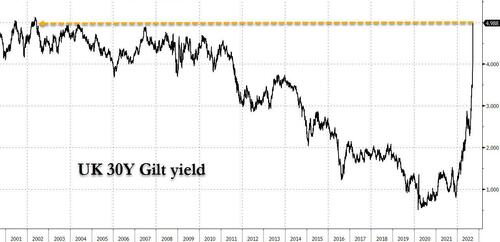It was a presidential election unlike any before.
During the campaign, one candidate was accused of using his political connections for personal enrichment. His opponent, in turn, stood accused of being mentally unfit for office. Allegations of voter fraud, intimidation, and attempted disenfranchisement flew in both directions—and only got worse after the election did not immediately provide a clear winner.
The crucial electoral votes in four states were disputed by the losing candidate, and his supporters pushed a wild plan to submit alternate slates of electors to Congress. There were even calls for impromptu militias to march on Washington. Finally, weeks after the election, Congress settled the dispute and declared a winner, but the inauguration took place under unusual circumstances due to fears of more violence.
Watching those chaotic events unfold, observers surely couldn’t help but wonder whether the American experiment was in peril. Could the country survive another election like this, or was it a sign of dissolution—or even another civil war?
Nearly 150 years later, the union endures.
Oh, you thought I was describing the tumultuous events of the 2020 presidential election? The parallels are there, of course: the accusations of bad faith, the threats of mob violence, the resolution by lawmakers under the Capitol dome. And the core of the fight, then as now, was whether the election had, in effect, been rigged by shadowy forces defying the will of the people.
The election of 1876 culminated with Rutherford B. Hayes inaugurated as America’s 19th president, despite having lost the popular vote and initially appearing to lose the electoral vote too. It probably remains the most controversial presidential contest in American history.
That’s not to diminish the importance of the events that unfolded in the immediate aftermath of the most recent presidential election. The January 6, 2021, storming of the Capitol by supporters of President Donald Trump and the preceding attempts by Trump and his associates to cajole everyone from county election officials to the vice president himself into overturning the results of the election were deeply worrying signs for the nation’s health.
But the past provides context. It can also be a guide. A dysfunctional, chaotic election is not necessarily the end of democracy. If the history of American politics teaches us anything, it should be that parties and candidates will stop at almost nothing to achieve power, and not only on Election Day. Trump and his cronies are not the first maniacs to take a hammer to the American electoral system. They probably won’t be the last.
The project of democracy is always in flux. Maintaining and improving the system requires an unfiltered view of history and a healthy amount of skepticism. That means refusing to dismiss the rising threat of anti-democratic sentiment on the right, but it also means not letting the issue become a partisan tool for the left either. Preserving American democracy will require what it always has: common sense, good faith, policy reforms that target real problems rather than partisan obsessions, and a willingness to accept that there’s no such thing as a perfect democracy—only a functional, legitimate one.
Allegations as Old as America
The presidential battle of 1876 was not the first disputed election in American history, nor the first to be marred by allegations of voter fraud and other criminal behavior.
One of the most infamous electoral disputes involved two of the country’s Founding Fathers. New York’s 1792 gubernatorial election was a showdown that’s nearly unimaginable today. The Federalist Party nominated John Jay, the sitting chief justice of the U.S. Supreme Court, to oppose incumbent Gov. George Clinton. When the votes were counted the first time, Jay appeared to have won. But when the state legislature met to certify the results, votes from three counties were disqualified on technicalities and Clinton was declared the winner by a mere 108 votes. He was subsequently “denounced as a usurper,” historian John Stilwell Jenkins wrote in his 1846 account, History of Political Parties in the State of New York.
In fact, the early years of American history were full of electoral shenanigans. The 1800 presidential election culminated in a backroom deal that handed Thomas Jefferson the presidency in an election that had been thrown to the House of Representatives after Jefferson and Aaron Burr tied in the Electoral College. In 1824, Andrew Jackson won a clear plurality of the electoral and popular votes in an unusual four-way race, but the presidency was awarded to John Quincy Adams when the House once again had to settle things.
Both elections paved the way for changes intended to ensure that similar controversies did not pop up again. Following Jefferson’s victory, Congress and the states ratified the 12th Amendment, which changed how the Electoral College operates. And after the Jackson-Adams controversy, the political system adapted. A new party system emerged, with Jackson’s faction forming the basis of what is today the Democratic Party. Rather than regional candidates, party-specific nominating processes began to control who would run for president. The influence of cohesive political parties created a new challenge for the democratic system. It was no longer just personalities but entire political machines trying to maximize leverage over election results.
They were not subtle. Gangs routinely intimidated rivals and stuffed ballot boxes. Potential voters were bribed with whiskey or food. Violence was common. In 1854, “Honest John” Kelly, an Irish Catholic and key figure in New York City’s Tammany Hall political machine, organized a gang of shipyard workers and firefighters to attack a polling place at the corner of Elizabeth Street and Grand Street. They destroyed ballots marked for Kelly’s opponent and ensured “Honest John’s” narrow win in his first election to Congress.
By 1876, those tactics had been honed. Samuel J. Tilden, a New York governor who rose to political prominence in part because he took on those Tammany Hall gangs, defeated Rutherford B. Hayes in the popular vote by about 250,000, about 3 percent of the total vote.
Each side engaged in widespread fraud. Both parties claimed victory in three states—Louisiana, Florida, and South Carolina—while a single electoral vote in Oregon was also subject to a dispute. With those 20 electoral votes cast into doubt, Tilden was one vote shy of the outright majority needed to win the presidency.
What followed was unprecedented. Congress was unable to resolve the impasse in the Electoral College because Republicans controlled the Senate, the president of which, per the Constitution, is responsible for tallying the electoral votes. Democrats, meanwhile, controlled the House, which would elect the president if neither candidate received a majority in the Electoral College. If the Republican Senate rejected the votes from the disputed states, then, it would succeed only in throwing the election to the House—which would, presumably, elect Tilden, the Democrat. If the Senate accepted the disputed votes, Tilden would win the old-fashioned way.
The impasse dragged on for weeks. At one point, a Democratic state representative from Kentucky, who also happened to be the editor of a Louisville newspaper, issued a call for “100,000 unarmed men to march on Washington” to defend Tilden’s rightful victory.
Finally, Congress struck a bizarre compromise: It passed a law creating a one-time Electoral Commission including five then–Supreme Court justices and members from both chambers. The commission concocted a backroom deal—the specifics of which were never made public—to name Hayes president. Fearing a possible mob protesting the outcome, the inauguration ceremony was held in private.
It was the closest America has ever come to having a president picked by a secret cabal rather than by the voters.
Recognizing the damage that disputed elections and backroom deals could do to the legitimacy of the federal government, Congress passed the Electoral Count Act in 1887 to clarify how the vice president, as the president of the Senate, should handle a situation where states proposed competing slates of electors. Going forward, only slates certified by the lawful governor of a state would be recognized, and objections to electors would only be considered if members of both the House and the Senate raised them. It would be another 128 years before such an objection would be logged.
Of course, that didn’t put an end to disputed elections. A popular conspiracy theory maintains that President John F. Kennedy won the presidency in 1960 with the help of votes cast by dead former residents of Illinois. Lyndon B. Johnson’s reputation as one of America’s most powerful senators (prior to succeeding Kennedy in the White House) may not have materialized if he hadn’t won a runoff election in 1948 that he initially appeared to lose. (Six days after the election, thousands of additional votes, an overwhelming number of which were tabbed for Johnson, were reported in three Texas counties, according to Johnson biographer Robert Caro.) And, of course, there was the infamous Florida recount in the 2000 race between George W. Bush and Al Gore.
There is one more noteworthy aspect of the 1876 election: Tilden accepted his loss with a degree of dignity that is hard to imagine today. He rebuffed his allies’ attempts to challenge the legitimacy of the commission that decided the election for Hayes, and he never sought public office again. “I can retire to public life,” he reportedly said, “with the consciousness that I shall receive from posterity the credit of having been elected to the highest position in the gift of the people.”
One cornerstone of democratic legitimacy is that the loser accepts the results. These days, even clearly defeated candidates will sometimes refuse to do so—that includes Trump, who continues to claim that he won in 2020. But like so many other aspects of Trump’s presidency, his refusal to publicly accept the election’s outcome is the apotheosis of a trend that had been building for decades.
After incumbent George W. Bush scored a narrow victory over then-Sen. John Kerry (D–Mass.) in 2004, many Democrats pushed a now largely forgotten conspiracy theory that claimed inadequate supplies of voting machines in predominantly black communities caused excessively long lines that discouraged voting, and that electronic voting machines added nonexistent votes to Bush’s total.
Then-Sen. Barbara Boxer (D–Calif.) and then-Rep. Stephanie Tubbs Jones (D–Ohio) went so far as to file an official objection to the certification of Ohio’s electoral votes—the first time that members of Congress had activated that provision of the Electoral Count Act. The objection was defeated by margins of 31–267 in the House and 1–74 in the Senate. Boxer has claimed that there is “no comparison” between her effort and what Republicans attempted to do after the last election. But a Rubicon was crossed.
President Barack Obama was elected by wide enough margins in 2008 and 2012 that disputes over the Electoral College were insignificant. Even so, Republicans, including and especially Trump, were not shy about questioning his legitimacy by raising questions about where Obama had been born.
Trump’s election, too, was marred by conspiracy theories, each seemingly wilder than the last. Democrats breathlessly reacted to each new development in the seemingly endless spiral of Trump-era scandals, and some seemed honestly to believe that Trump’s presidency would be ended—or even that he would be revealed to be a Russian spy—by revelations that were always inevitable but never arrived. More than a year after Trump left office, this narrative persists. Former White House Press Secretary Jen Psaki told a group of social media influencers on March 11 that “of course” Russia “hacked our election here” in 2016.
This trend of mixing conspiratorial allegations with refusals to accept election results has shown up in nonpresidential races too, as when Democratic candidate Stacey Abrams refused to concede Georgia’s 2018 gubernatorial election or when Republican nominee Roy Moore refused to concede a 2017 special election to fill one of Alabama’s two Senate seats.
Some of this is fairly frivolous. Some of it is quite worrying. But little of it is truly novel. American political candidates have always sought to exploit such fears.
“There has never been a time when Americans have been comfortable with their electoral system. Mass politics has come with an undertow of fear,” wrote the Oxford historian Adam I.P. Smith in a prescient 2016 essay. “At the heart of this fear is the creeping sense that the system’s transparency is a sham and that someone somewhere is manipulating the system to cheat the ‘real’ people of their rightful rule. Almost always such charges are linked to the idea that there is a group of voters who are so weak or supine that they will allow themselves to be the pawns of some behind-the-scenes power broker.”
Partisan Shenanigans vs. the Public
Behind-the-scenes power brokers do exist, of course. And sometimes they really are scheming against the rest of us, through partisan redistricting processes and through ballot access laws that limit political competition.
When it comes to redistricting, the once-per-decade process of redrawing congressional and legislative district lines, “partisan concerns almost invariably take precedence over all else,” says Michael Li, a senior counsel at the Brennan Center for Justice. “That produces maps where electoral results are virtually guaranteed even in years where the party drawing maps has a bad year.”
Thanks to their party’s big victories in the 2010 midterms, Republicans controlled a majority of statehouses when the last round of redistricting took place. They took full advantage. By carefully drawing districts to maximize their chances, Republicans claimed 10 of North Carolina’s 13 congressional districts in 2014, despite winning just 53 percent of the statewide vote in House races. Those results—and similar outcomes in states with GOP-drawn maps, such as Pennsylvania and Wisconsin—drew widespread condemnation in the media and helped kick-start redistricting reform efforts in some states.
What went less remarked upon is the fact that, in the same election, Democrats swept all nine of Massachusetts’ congressional districts despite winning just 59 percent of the statewide vote.
As both parties become more adept at picking their voters and packing their opponents’ voters into as few districts as possible, elections have become less competitive. After the most recent round of redistricting, there are just 60 congressional districts (out of 435) where Biden or Trump won by fewer than 8 percentage points in the 2020 election, according to an analysis by the Brennan Center released in August.
Election outcomes in these “single-party districts” are effectively determined by the lower-turnout primary process, rendering the higher-turnout general election meaningless. Candidates running in those districts have little political incentive to appeal to the median voter, and are likely to see a greater benefit from playing to the extreme edges of our politics.
Ballot access laws serve a similar purpose. Like redistricting procedures, these differ from state to state. But the result is to punish outsiders who want to put their candidates on the ballot alongside the Rs and Ds.
To understand how redistricting and ballot access laws work in tandem to undermine the democratic process, take a look at Georgia’s 14th district, home of Trump ally Rep. Marjorie Taylor Greene. It’s a one-party district. Democrats didn’t even run a candidate there in 2014 or 2016, and Greene’s Democratic opponent got barely more than 25 percent of the vote in 2020.
Third parties might provide some needed competition to an increasingly off-the-rails GOP if they were allowed to do so. But Georgia’s ballot access laws are among the toughest in the country, requiring prospective candidates from outside the duopoly to front a $5,200 fee and collect 23,000 signatures. The rules are so tough that no third-party candidate has qualified for the ballot in a congressional election in Georgia since the law was passed in 1943, ostensibly to prevent Communists from getting elected. Angela Pence, the Libertarian Party candidate who attempted to challenge Greene this year, fell well short of meeting the outlandish requirements.
A lack of real competition and a primary system that elevates fringe voices has helped transform seemingly every important election into a winner-take-all, fate-of-the-universe-hanging-in-balance contest between a pair of detestable options.
That, in turn, has bred deep-rooted cultural resentments on both the left and the right. The modern progressive left’s resentments stem at least in part from Bush’s Supreme Court–decided victory over Gore in 2000 and an electoral system that could twice in five presidential elections allow the candidate with fewer popular votes to win. But it has metastasized into something else—a condescending frustration with the mass of Republican voters, as seen in comments like Obama’s reference to “bitter” voters who “cling to guns or religion or antipathy toward people who aren’t like them,” or Hillary Clinton’s sweeping condemnation of GOP “deplorables.” Republicans, in this view, are morally tainted as a cohort, and their political power is fundamentally illegitimate.
Conservatives, meanwhile, have fallen victim to a paranoid mindset about left-leaning power that manages to be self-aggrandizing even as it wildly exaggerates their victimhood. That’s most obvious in the conspiracy theories that catch on in the Republican base, like the “birther” controversy under Obama and the more recent QAnon phenomenon, a core premise of which is that Trump was engaged in a secret battle against a clandestine cabal of powerful pedophiles. There is paranoia about the loss of American jobs to overseas workers, paranoia about the loss of American jobs to immigrants, paranoia about the “replacement” of a white, Christian majority with, well, anything else.
And there’s a constant fear in the GOP base that even Republican officials are selling them out—a claim made by both the small-government Tea Party movement of the early 2010s and the big-government nationalists who rose to prominence with Trump.
In a related development, political scientists have tracked a rise in “negative partisanship”—that is, when people are motivated primarily to vote against a perceived opponent rather than for their own preferred choice—since the early 2000s.
With fewer meaningful options at the ballot box, voters are increasingly motivated not to choose leaders but to lash out against opponents. And if the electorate is motivated mostly by fear of what the other guy will do if he gets to be in charge, it becomes easier to justify doing anything to prevent that outcome.
Anything. Like rejecting the results of an election, and storming the Capitol.
The Real Attempt To Subvert Democracy
The striking images of protesters storming the Capitol after Trump urged them to “walk down to the Capitol” and “show strength” are by now familiar to virtually all Americans. But the unprecedented eruption of violence at the Capitol was actually the less worrisome part of the events that unfolded on January 6, 2021.
That’s not to downplay the riot. Trump was rightly impeached over his role in inciting the mob. Protesters who broke laws have been arrested and are being tried and convicted. The House’s special committee investigating the incident has done a service by documenting the specific timeline of events, including the involvement of Trump, top White House staffers, and Republican members of Congress.
Perhaps the most important detail to emerge during the hearings is the extent to which Trump’s inner circle knew his election conspiracy theories were empty nonsense. “I said something to the effect of, ‘Sir, we’ve done dozens of investigations, hundreds of interviews. The major allegations are not supported by the evidence developed. We’ve looked in Georgia, Pennsylvania, Michigan, Nevada,'” former deputy attorney general Richard Donoghue testified to the January 6 committee. Donoghue recalled telling Trump: “We’re doing our job. Much of the info you’re getting is false.”
Trump went ahead with the plan anyway.
The plan was an attempt to pull off what Hayes succeeded in doing back in 1876: inject enough uncertainty into the results to allow Congress to determine the outcome of the election. At the center of that strategy was Vice President Mike Pence, who was presiding over the certification of the Electoral College’s votes when the riot occurred.
This was the real attempt to subvert democracy.
In September 2021, attorney John Eastman shared with media outlets a six-page memo he had initially drafted for the Trump White House in the aftermath of the 2020 election. It said that officials in a handful of states won narrowly by Biden should submit alternative slates of electors, then have Pence invoke his unilateral authority “without asking for permission—either from a vote of the joint session [of Congress] or from the [Supreme Court]”—to count only the Trump-supporting slates from those states. If state legislators in Arizona, Michigan, Pennsylvania, and other disputed states failed to take the bait, there was a backup plan in which Pence would cite “all the evidence and the letters from state legislators calling into question the executive certifications” as grounds for refusing to count the votes from seven disputed states.
“At the end of the count, the tally would therefore be 232 for Trump, 222 for Biden,” Eastman wrote. “Because the 12th Amendment says ‘majority of electors appointed,’ having determined that no electors from the 7 states were appointed…TRUMP WINS.”
It’s unknowable whether this would have worked. It would have drawn an immediate lawsuit from the Biden campaign, but it’s unclear how the Supreme Court would have viewed its role in such a dispute.
We never had to find out, thankfully, because Pence didn’t go along with the plot.
Trump still believes he should have. “Mike Pence did have the right to change the outcome,” Trump said in a statement released in February of this year. “He could have overturned the election.”
Pence still disagrees. “I had no right to overturn the election,” Pence said a few days after Trump’s statement was published. While speaking at an event organized by The Federalist Society, a conservative legal organization, the former veep went on to say “there’s nothing more un-American” than to have “one person choose the president.”
If the same party held the vice presidency and a majority of the state-by-state congressional delegations in the House—as Republicans did on January 6, 2020—then the Eastman memo is an effective road map for doing exactly what Trump now admits he was trying to do: use a sitting vice president to overturn the legitimate results of an election. If it had succeeded, no riots would have been necessary. Republicans who might have been tempted to support that ultimate form of political hardball to get a second term for Trump should ask themselves if they’d now want Vice President Kamala Harris to have the same power.
As ugly, violent, and embarrassing as things were, the system survived 2020. For the most part, local officials, governors, courts, state lawmakers, members of Congress, and the vice president did the right things, even against their own political self-interest—and even, at times, with Trump’s hot breath down their necks and thousands of angry protesters screaming in their ears.
When you strip away the ceremonial and administrative trappings, democracy is just people—people who are, inevitably, as flawed, selfish, and ignorant as anyone else. All we can expect is that they follow the rules and their own best judgment. This time they did.
So why does next time feel so ominous?
The War for Legitimacy
American democracy is inherently contingent. Its legitimacy is based not on pure majoritarian desire—the will of the people—but on the integrity of the system itself. If officials drew a different set of district lines in North Carolina or Ohio, the same voters casting the same votes in the same places might produce a different result. Does that magically change the will of the people? Elections are more like games than we like to admit. The rules are somewhat flexible. But as in any game, cheating should be called out and punished.
With that in mind, here are a few things we should be able to say with certainty about the state of American democracy.
First, Trump and Eastman’s attempt at exploiting a loophole in how Congress counts the electoral votes was deliberately designed to break the game. This acute attack on the fundamental legitimacy of determining who gets to be president must be addressed before it can be potentially exploited again.
Second, the crisis that nearly unfolded on January 6 was the culmination of a decadeslong poisoning of political culture by resentful and paranoid elements within the two major parties. This is a cultural issue unlikely to be solved by passing new voting laws.
Naturally, both Democrats and Republicans are proposing new voting laws.
Republican efforts are primarily directed at preventing the mostly nonexistent scourge of voter fraud by laying new requirements on would-be voters. According to the Brennan Center, which tracked 389 state-level election bills during the 2021 legislative sessions, at least 20 bills were enacted along these lines. Some require voters to show photo identification before casting a ballot. Others limit voter registration, purge voter rolls of those who haven’t shown up in several election cycles, or impose new regulations on mail-in voting—like Georgia’s controversial new law limiting how many ballot drop boxes a county may deploy in advance of an election.
Each of those ideas has its own merits and drawbacks, but the policy debate obscures what’s really going on here. Voter fraud is not a substantial problem.
“There was no evidence of widespread voter fraud,” the Wisconsin Institute for Law and Liberty, a conservative group that reviewed the state’s 2020 election returns, reported last year. “In all likelihood, more eligible voters cast ballots for Joe Biden than Donald Trump. We found little direct evidence of fraud, and for the most part, an analysis of the results and voting patterns does not give rise to an inference of fraud.” Audits carried out by state lawmakers in Arizona and Pennsylvania similarly failed to uncover evidence of the far-ranging conspiracy Trump alleged.
That hasn’t stopped GOP lawmakers from pressing ahead, seeking to change the rules of the game for a political advantage.
Democrats, meanwhile, are trying to one-up Republican efforts at the state level by passing a major overhaul of election rules at the federal level. The changes proposed by House Resolution 1 would federalize much of the election process that has always been under the purview of states.
Key components of the sprawling bill include implementing a national voter registration system, requiring at least 15 consecutive days of early voting, and imposing new disclosure requirements for political advertising and candidates. (Future presidents will not be able to emulate Trump by keeping their tax returns secret, for example.)
In January, Biden called on Senate Democrats to blow up the filibuster in order to pass those changes, which cleared the House in a party-line vote late last year. So far, that hasn’t happened. He also doubled down on the bipartisan effort to undermine electoral legitimacy by preemptively claiming that the 2022 midterms might be unfair unless Democrats’ preferred policies were enacted. “The increase and the prospect of being illegitimate is in direct proportion to us not being able to get these…reforms passed,” the president said. (The White House later clarified that Biden was “absolutely not predicting that the 2022 elections would be illegitimate.”)
Republicans control a majority of statehouses. Democrats control Congress. Each is trying to impose its own will on elections, as American political parties have for well over a century. The increased politicization of not just elections but the rules governing elections will only deepen the distrust and paranoia already driving American politics.
A few members of Congress are focused on fixing what nearly went off the rails on January 6. In July, a group of nine Republicans and seven Democrats introduced the Electoral Count Reform and Presidential Transition Act, which would amend key parts of the law passed in the wake of the 1876 election. The proposal is a rarity in Congress: a specific solution to a specific problem. It would remove much of the ambiguity that the Eastman memo sought to exploit by clarifying that the vice president “shall have no power to solely determine, accept, reject, or otherwise adjudicate or resolve disputes over the proper list of electors, the validity of electors, or the votes of electors.” It would also require at least a fifth of the Senate and a fifth of the House to object to vote counts before an official objection could be lodged.
Since GOP gubernatorial nominees in Arizona, Maryland, Pennsylvania, and Wisconsin have already said they would not have certified Biden’s win, the bill’s passage is even more urgent. Among its provisions, the bipartisan reform would allow federal judges to intervene if a state’s legislature refused to certify a winner in a presidential election or if the state certified the losing candidate as the winner.
That might help, but the system likely cannot survive if a major American party coalesces around the idea that the only legitimate elections are ones that it wins.
Seriously addressing that problem will be more difficult. But reforms aimed at giving voters more choices, or ensuring that elections reward candidates that better reflect the preferences of the median voter, might help.
Alaska and Maine, for example, are experimenting with new primary systems that attempt to limit the power of party bases in choosing candidates for the general election. Maine now uses ranked-choice voting, which allows voters to list their first, second, and third place choices. That promises to open up new axes of competition for votes.
In Alaska, a top-four primary system is now being used, allowing the four candidates with the most votes in the primary round to advance to the general election regardless of party affiliation. That narrows the field, but it makes it harder for a fractional candidate to eliminate the alternatives.
Under the old primary rules, someone like Sen. Lisa Murkowski (R–Alaska) might not have survived after voting to convict Trump for his actions on January 6. Or she might have voted differently in that instance to preserve her political future. As it stands, she is the favorite for reelection this year.
That might make it seem like Alaska’s reforms are another win for incumbency, but that’s probably not true. By guaranteeing four spots in the general election for the top primary vote-getters, Alaska’s reforms naturally throw open the door to candidates from outside the R/D duopoly, thus undermining the major parties’ efforts to limit political competition.
These sorts of changes might help turn down the temperature of politics. Federalizing the rules governing elections, on the other hand, would only crank up these winner-take-all battles, which are as corrosive as they are exhausting. If we’re going to tinker with the system, it’s better for states to experiment with potential fixes rather than trust one national party to implement high-stakes changes. Big partisan plans to “save” democracy are often little more than a false face for the urge to control it.
What makes a legitimate electoral system? Ideally, it should emulate a market: sometimes chaotic, full of competing choices, reflecting the ever-changing wills of the participants. That means some things have to be considered out of bounds. One person should not get to determine outcomes. Participants should not be excluded based on arbitrary criteria such as race and gender. Cartels that limit electoral competition should be rooted out. And violence is never an appropriate way to get what you want.
De-escalation would also be helped by removing some of the mighty powers that the presidency wields: Make the prize less seductive, and the contest will become less important.
Tweaks to the electoral process won’t eliminate the resentment and paranoia that have been driving American politics in increasingly irrational directions. The dark side of the pursuit of political power isn’t going away. But there are cracks in the system that we can patch, and that can reduce the damage that the dark side can do.
The post American Elections Are a Mess, and They Always Have Been appeared first on Reason.com.
from Latest https://ift.tt/GcNK72J
via IFTTT








